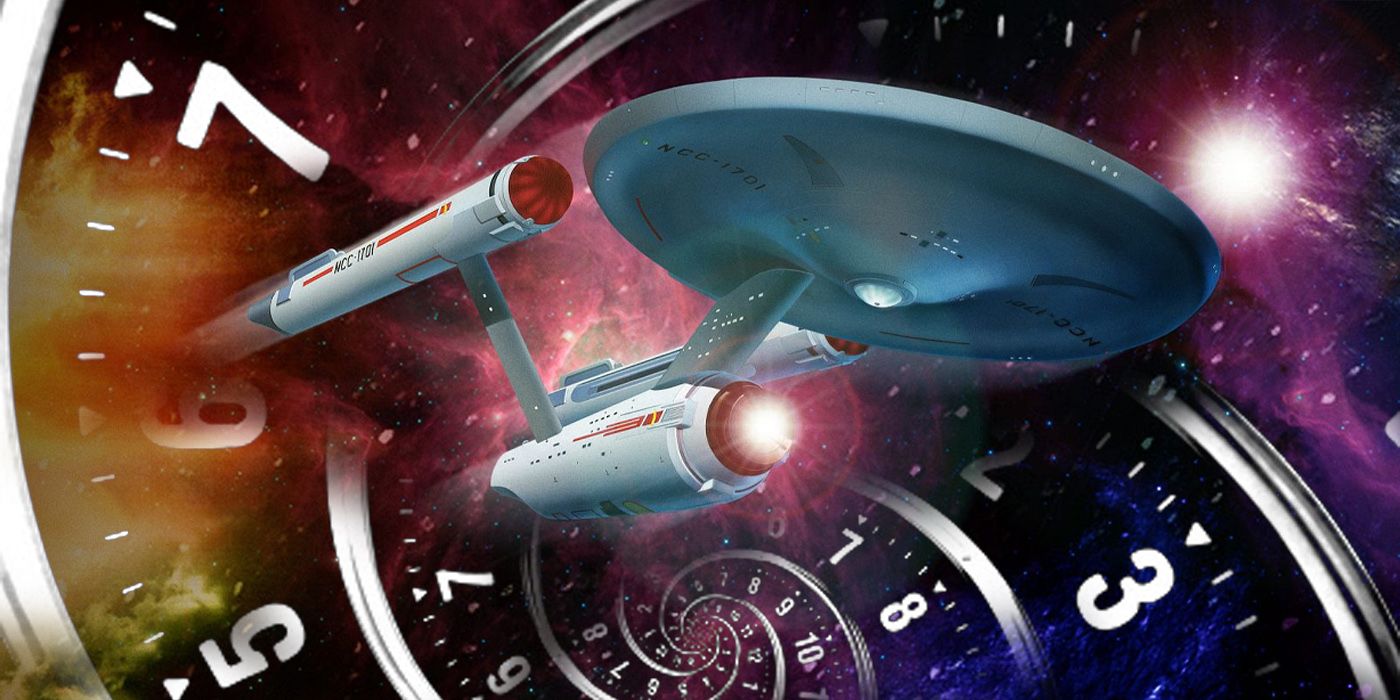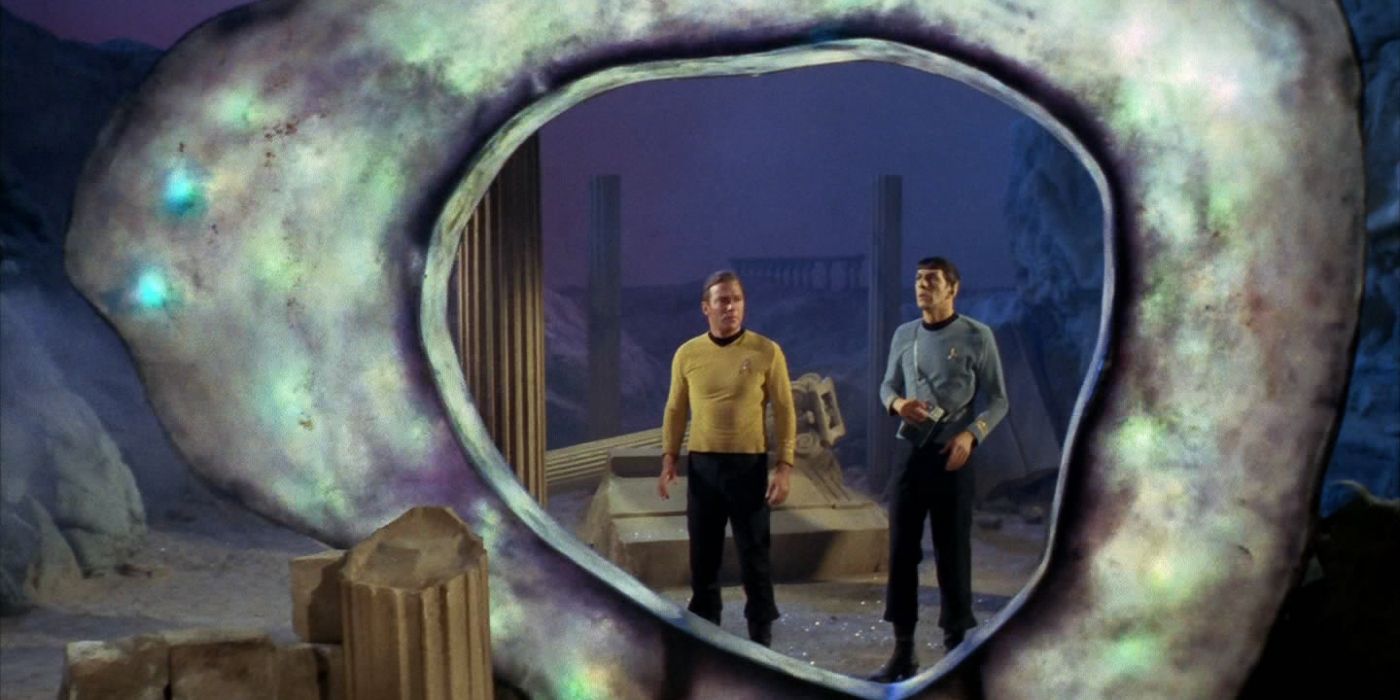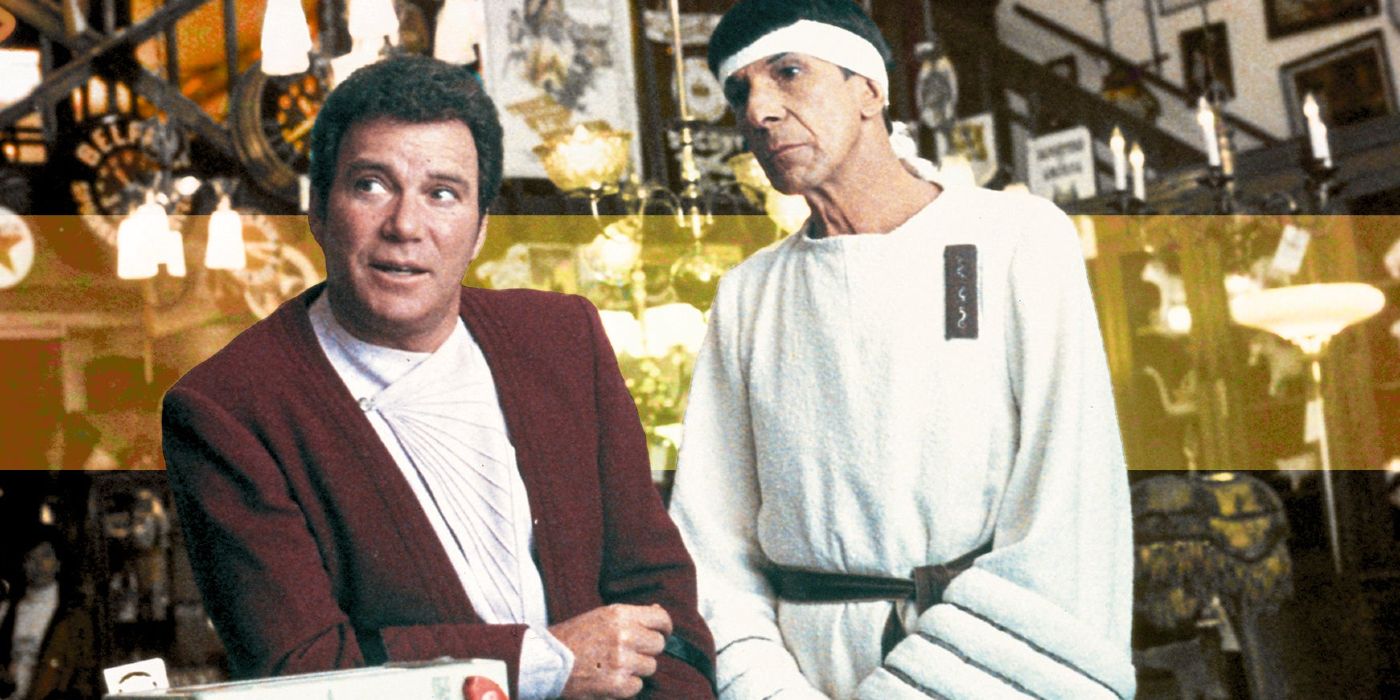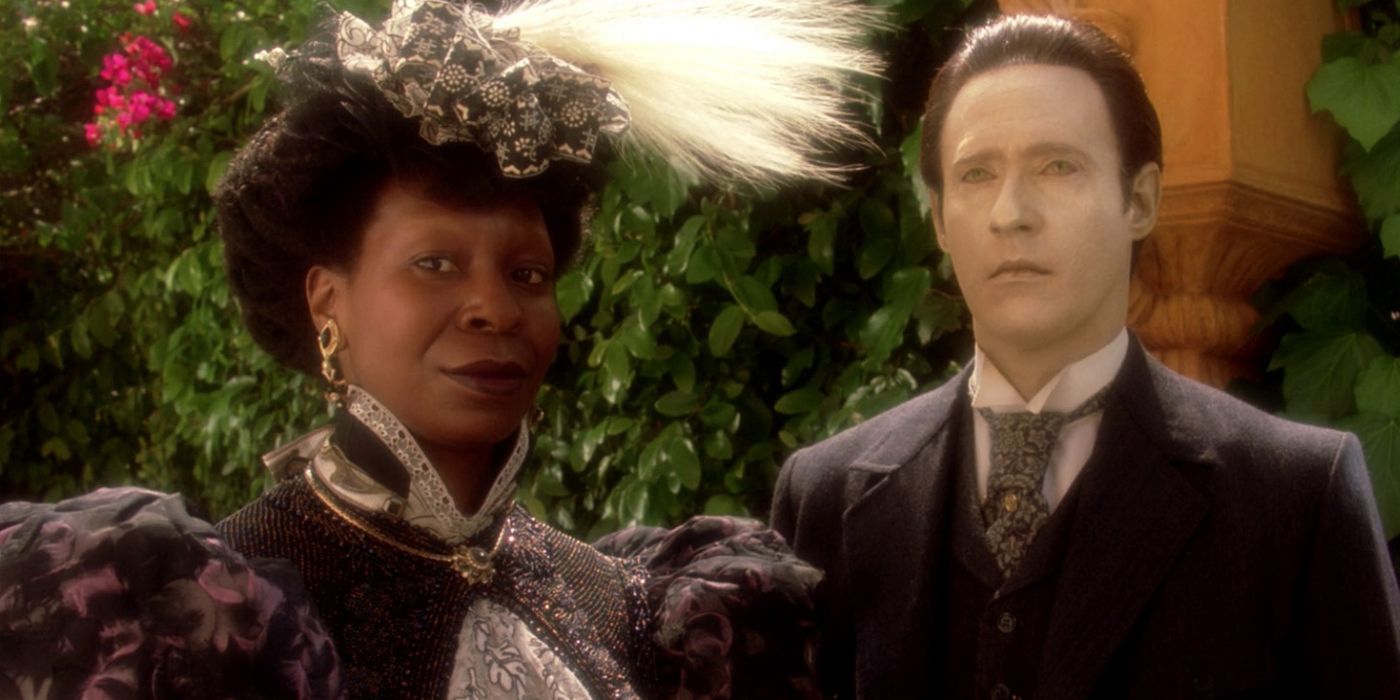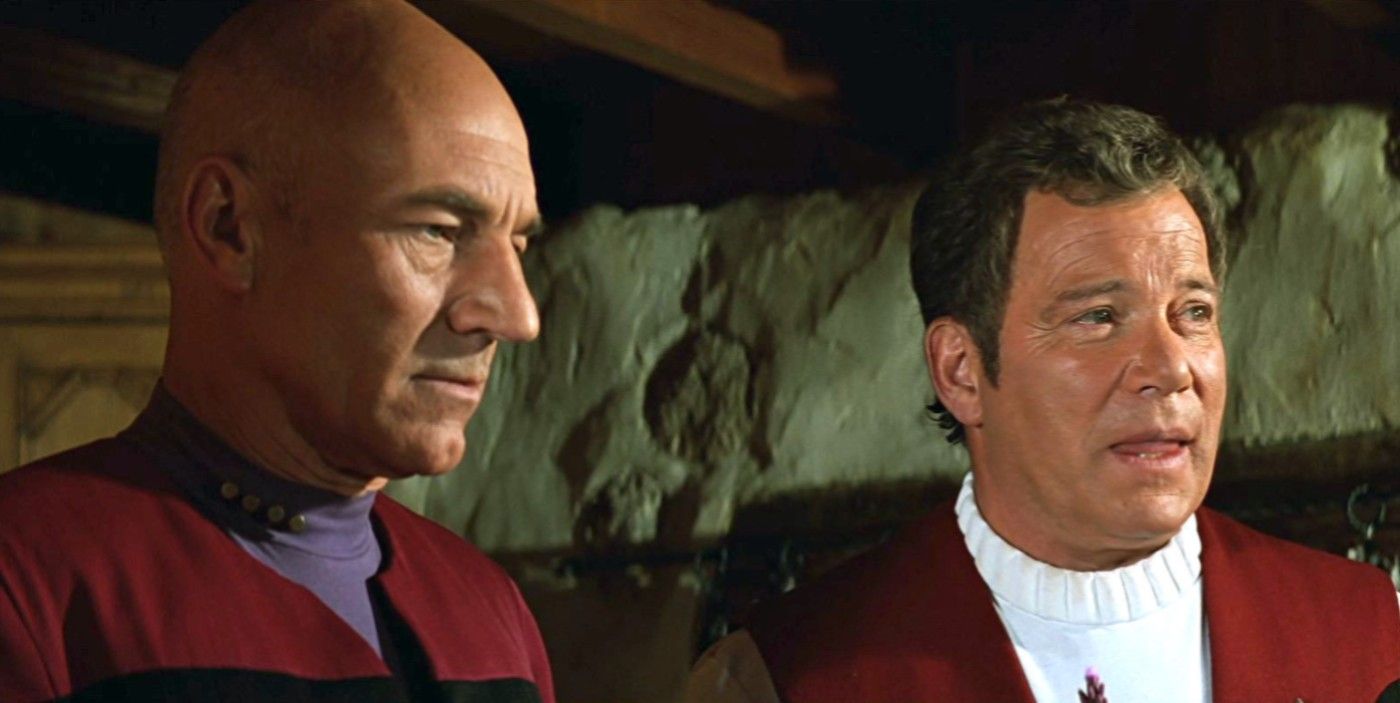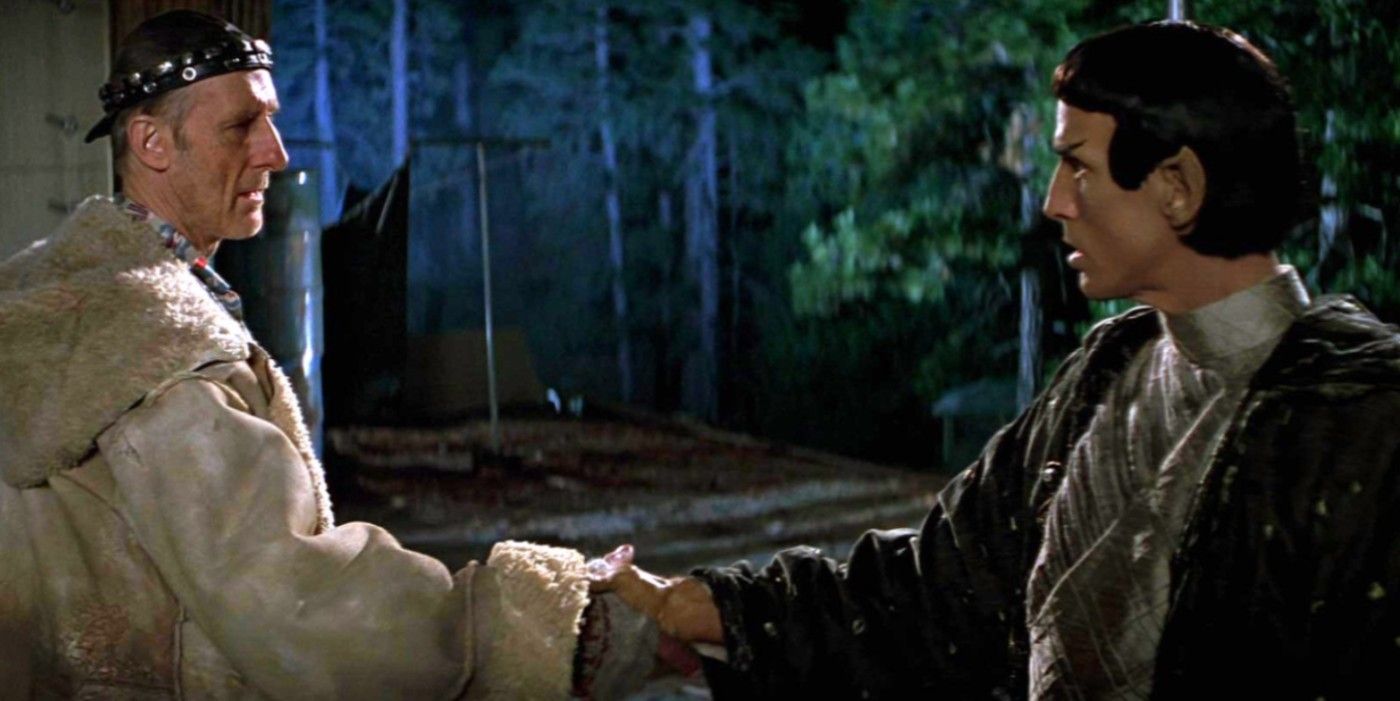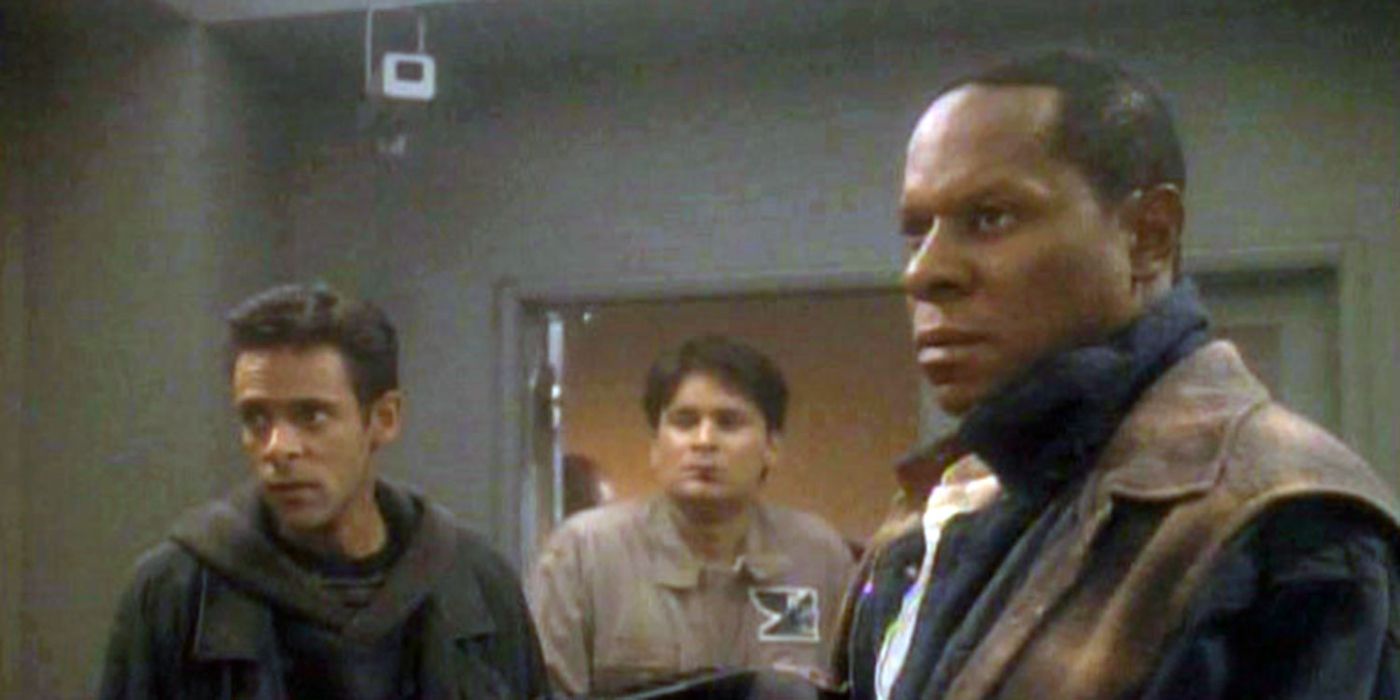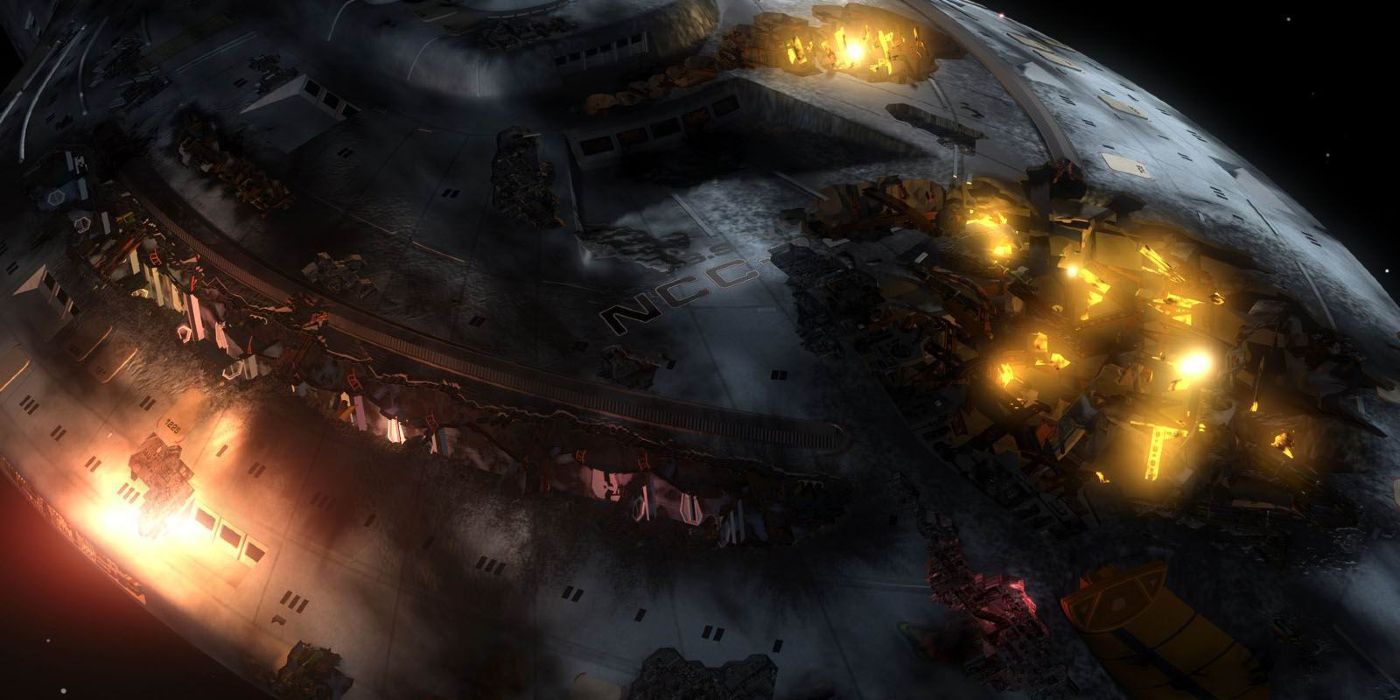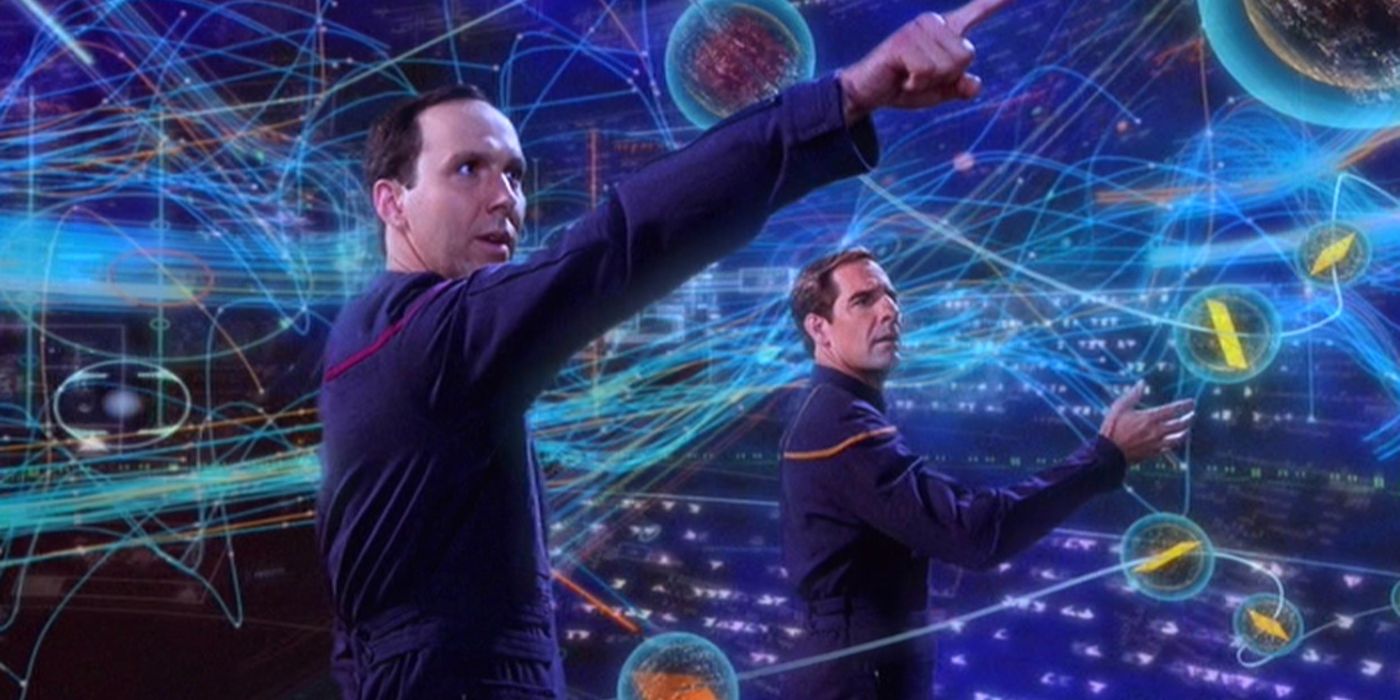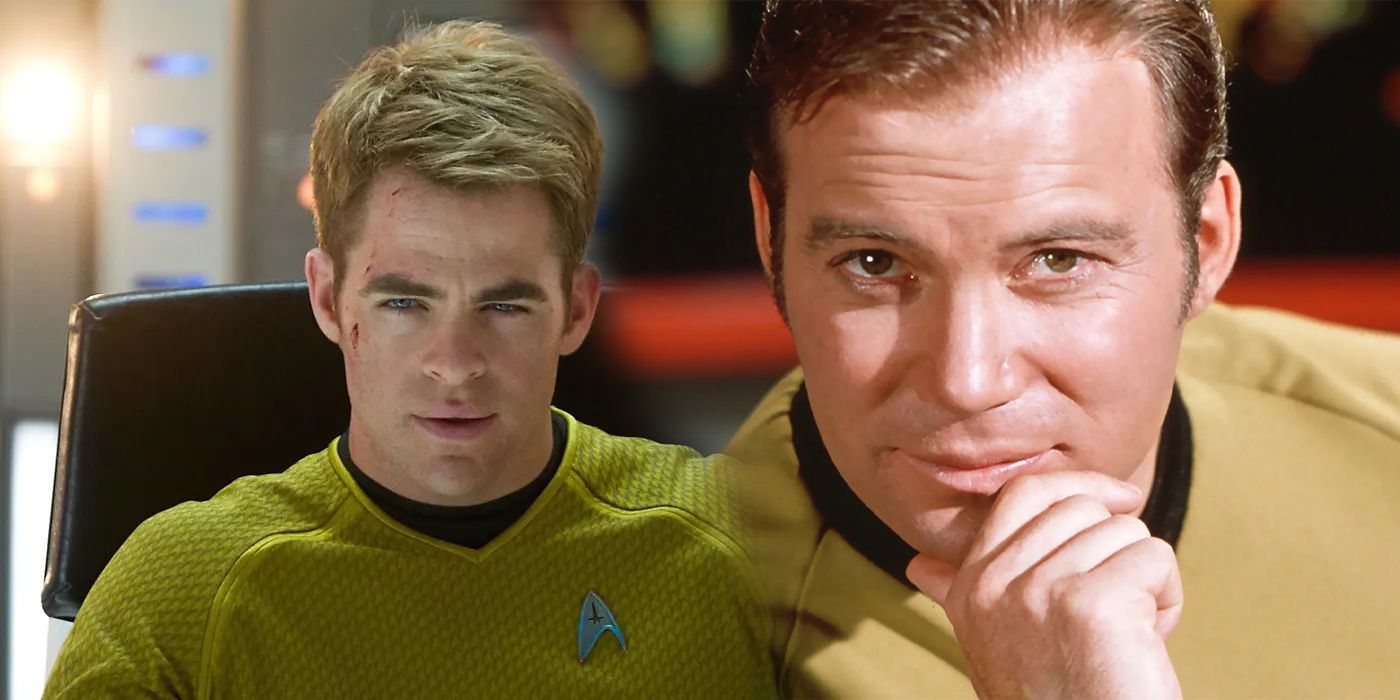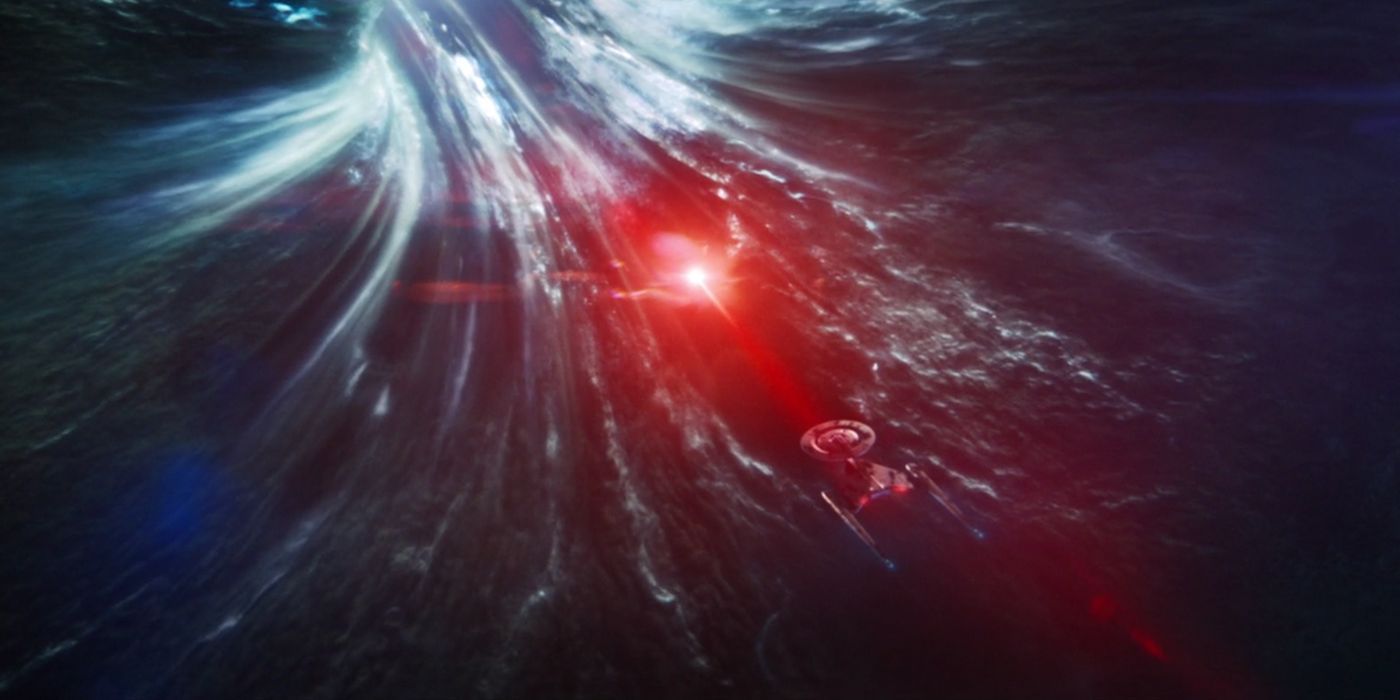Time travel is possible in the Star Trek universe — but its rules are inconsistent among the franchise's TV shows and movies. Time travel is a staple science-fiction trope, but it is also a problematic one. Although it is theoretically possible under Einstein's Theory of Relativity, it remains purely theoretical. As a result, every fictional franchise that deals with it tends to make up their own rules, figuring it out as they go along. In most cases, the pseudo-science of temporal mechanics comes second to plot necessity, and as a result there's usually a general degree of inconsistency. This isn't necessarily a bad thing; most viewers are willing (and able) to put the craziness of Back to the Future behind them and enjoy the ride; movies are stories, not science lessons.
For all that's the case, though, the Star Trek franchise is a little different. Gene Roddenberry intended this to be a hopeful and optimistic vision of the future, and as such he attempted to make his stories as consistent as possible. Naturally, the franchise as a whole has failed to achieve this; the more writers and showrunners that get involved, the more likely it is that the show's pseudo-scientific laws will start to contradict. The task was impossible, especially given how long the Star Trek franchise has lasted.
Still, that doesn't mean it's impossible to try to figure out the rules of time travel in the Star Trek universe. Let's take a look at how it develops across the decades.
Time Travel in Star Trek: The Original Series
In the Star Trek: Deep Space Nine episode "Trials of Tribble-ations," representatives of Starfleet's Agency of Temporal Investigations described James Kirk as an absolute menace. "Seventeen separate temporal violations," one of their agents observed. "The biggest file on record." It's difficult to say what exactly constitutes a "violation" in their terms, but one thing seems for certain; only a fraction of Captain Kirk's time travel exploits have been revealed, in the episodes "The Naked Time," "Tomorrow is Yesterday," "The City on the Edge of Forever," "Assignment: Earth," "All Our Yesterdays," and "Yesteryear." All were cases of traveling to the past, not to the future, which is presumably why they were considered violations.
"The City on the Edge of Forever" is one of the most fascinating time travel stories in the entire Star Trek franchise. It saw the crew of the Enterprise discover a city filled with gateways to other times and other dimensions, and they inadvertently access one of these to change history. The crew in the city were protected from the effects, but otherwise all of creation was changed, and the Federation itself was erased. The model of temporal mechanics appears to be that there is just one timeline, and that is incredibly vulnerable to change; time travelers need to be incredibly careful not to change history. This generally fits with the other episodes, which see Kirk and his crew attempt to ensure they don't accidentally erase the Federation from history again. Sometimes their efforts are bizarre, and make absolutely no sense at all; in "Tomorrow is Yesterday," the Enterprise beams an Air Force pilot back into his fighter jet at the moment he was taking, which apparently has the side-effect of erasing his memories, for unclear reasons.
Time Travel in Star Trek IV: The Voyage Home
In Star Trek IV: The Voyage Home, the Enterprise travels back in time to 1986 in order to save the Federation's future. This time, their explicit goal is to interfere; to reverse the extinction of humpback whales in Earth history by transporting them to their own time. Of course, this is a relatively minor change to the timeline, given the whales were about to be released into the open anyway and thus wouldn't be missed by anyone but their former handlers. In this case, history doesn't appear to be changed at all, although there is one questionable scene in which Scotty tells a scientist how to produce "transparent aluminum," but in the novelization he reflects he knew he was talking to the man supposed to invent it anyway. The crew of the Enterprise have apparently mastered the science of time travel to the extent Spock can precisely calculate how to ensure their ship arrives at the exact right moments in time.
Time Travel in Star Trek: The Next Generation
Several episodes of Star Trek: The Next Generation suggest a consistent universe, where the past is unalterable and unchangeable. This is most notable in "Time's Arrow," when the Enterprise is recalled to Earth when archaeologists discover the severed head of Data. Data insists his fate is sealed, because time cannot be changed, and thus the presence of his head means at some point he must travel back and face destruction. "At some future date, I will be transported back to 19th century Earth, where I will die," Data insists. "It has occurred. It will occur." He is soon proved right, but fortunately the ancient head is reattached to his body in the present. It's a basic time loop, a staple of science-fiction. Several other episodes suggest the same view of temporal mechanics. And yet, Star Trek: The Next Generation isn't exactly consistent; it also suggests the creation of alternate timelines, most notably in the finale, "All Good Things..." There, Q transported Picard's consciousness through different timelines in order to ensure he had the knowledge he needed to save humanity. This hints towards the multiverse theory.
Time Travel in Star Trek: Generations
Star Trek: Generations makes an important contribution to time travel theory, in that James T. Kirk is essentially transported from his own time to the Next Generation era by a temporal anomaly. This is significant, because it apparently confirms the existence of other dimensions where the laws of time do not operate in the same way. This, too, is a step towards the multiverse model in its broadest sense; not just the idea of other timelines, but of other planes of existence, where time is not quite so fixed.
Time Travel in Star Trek: First Contact
Star Trek: First Contact seems to return to the idea that time can be changed, with the Borg attempting to rewrite history and erase the Federation from existence. The crew of the Enterprise travel back as well, desperately attempting to ensure things stay roughly on course. They are successful, thankfully, and preserve their current timeline. This film is particularly interesting because it appears to suggest time has a certain resilience, one not seen in Star Trek: The Original Series; there are a number of changes, but they are absorbed into the timeline easily. Interestingly, Borg survivors emerge in the Star Trek: Enterprise episode "Regeneration," and they send a signal to their brethren in the Delta Quadrant, creating a time loop where they had caused the Borg invasion in the first place.
Time Travel in Star Trek: Deep Space Nine
Star Trek: Deep Space Nine had remarkably few time travel episodes, rather amusing given it features a wormhole - one of the few things theoretical physicists believe could allow time travel. One of the most fascinating episodes, "Past Tense," supports the theory of a single consistent timeline that is quite resilient to change; Ben Sisko is forced to take the place of a key figure in Earth history, and he ensures events play out as they should have. Afterwards, the only alteration to the timeline is a changing photo, incorporating his actions into the course of history.
But this resilience only runs up to a certain point, as revealed in "Children of Time," when an entire colony established by the Defiant's crew due to time travel was erased from existence. And yet, again, this isn't consistent. "Accession" is a disturbing anomaly, because it sees the Prophets return Akorem Laan to his own time, but the crew of Deep Space Nine still clearly live in a timeline where that did not happen. Star Trek: Deep Space Nine introduces the Orb of Time, which allows time travel; it is unclear whether this artifact, created by the Prophets, possessed special abilities that override the normal rules of time.
Time Travel in Star Trek: Voyager
Star Trek: Voyager's temporal mechanics are no more consistent. The most famous episodes involving time travel are those involving glimpses of alternate timelines, with time travel used to avert disaster; this idea features prominently in the season finale "Endgame," in which a future Kathryn Janeway provides technology to ensure her younger self gets home quicker. Other episodes, however, hint more at a single consistent timeline that can be altered via time travel; in "Parallax" Voyager is lured into an anomaly by its own time-distorted distress call, while in "Year of Hell" a scientist called Annorax creates a device that erases objects from the timeline, with catastrophic effects as every past interaction is also changed. History is only corrected when the weapon is used to erase itself from existence, and everything previously affected is restored.
Time Travel in Star Trek: Enterprise
No Star Trek TV series has yet been affected by time travel as much as Star Trek: Enterprise, which featured a so-called "Temporal Cold War." This conflict was instigated by several rival time traveling factions who were each attempting to rewrite history in their own advantage, clearly indicating the existence of a single consistent universe where history can nevertheless be altered. This revealed the galaxy eventually agreed to the Temporal Accords, restricting the use of time travel, but that some rogue planets insisted on their right to improve their own past — even if it meant damaging the history of other worlds. "Storm Front Part I" and "Storm Front Part II" nevertheless revealed paradoxes cause damage to the fabric of time itself, unleashing devastating and destructive temporal anomalies. It is possible many of the temporal and spatial anomalies encountered in different Star Trek TV series were created by the Temporal Cold War.
Time Travel in J.J. Abrams's Relaunch
J.J. Abrams' Star Trek relaunch commits the franchise to the multiverse model of time travel, with the time traveling Nero creating a new branch in time referred to as the "Kelvin Timeline," because it was initiated by the destruction of the Federation starship Kelvin in 2233. This is easily the most significant development in temporal mechanics in the entire history of Star Trek, because the franchise is now committed to exploring two timelines, not just one. It is unclear, however, whether writers have quite grasped the importance of this in terms of Star Trek's pseudo-science; as always, time travel appears to serve the purpose of the plot, a convenient excuse for relaunching the franchise on the big screen while continuing the previous stories on the small screen.
Time Travel in Star Trek: Discovery
That brings us, finally, to Star Trek: Discovery — another show that promises to be transformed by time travel. Season 2 introduced the Red Angel, a suit created by Section 31 in the 2030s because they feared a temporal arms race with the Klingons. The Red Angel used a time crystal and micro-wormholes to jump through time, but Gabrielle Burnham found herself stranded in a dystopian future where an AI called Control had destroyed all organic life in the galaxy. She subsequently traveled back in repeated attempts to rewrite history and avert this horrific timeline. In the end, Gabrielle's daughter Michael Burnham took the codes that would enable this galactic genocide to the 32nd century, along with the USS Discovery.
One of the more important contributions to time travel lore, however, was introduced in the Star Trek: Discovery tie-in novel Dead Endless. Unlike traditional Star Trek tie-ins, these are considered canon, which makes Dead Endless particularly interesting; it is set in a slightly different timeline to the normal one, in which Michael Burnham never mutinied and triggered the Klingon War. It reveals the mycelial network weaves across the entire multiverse, allowing travel through both time and space; it is roughly analogous to the Marvel Cinematic Universe's Quantum Realm. Discovery's spore drive is, consequently, the key to exploring the multiverse — but, ironically, it is never used in this way in the main timeline. There, experiments with the spore drive were disrupted by the Klingon War; when Discovery traveled to the 32nd century, it took the galaxy's one expert with it, and spore drive technology will have been discontinued. Still, this builds upon the idea of the multiverse, and even introduces the multiversal Federation — a group who will presumably never be encountered in the normal timeline, due to the abandonment of the spore drive.
Looking at all these examples, it's difficult to establish a unified theory of time travel in the Star Trek universe. The best attempt was conducted by Christopher L. Bennett in his book Department of Temporal Investigations: Watching the Clock, but that isn't considered canon, and has already been contradicted. But, of course, this is how it should be; time travel is theoretical, and should only ever be treated as a plot device, not as a hard and fast rule that binds writers' hands.

